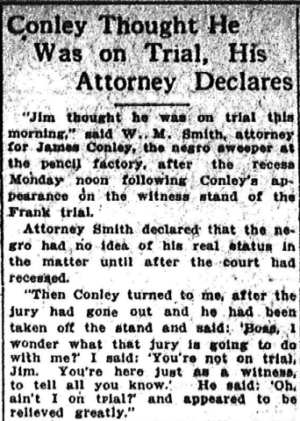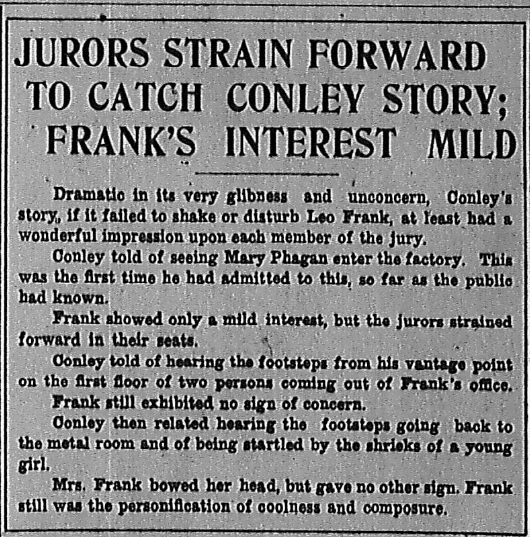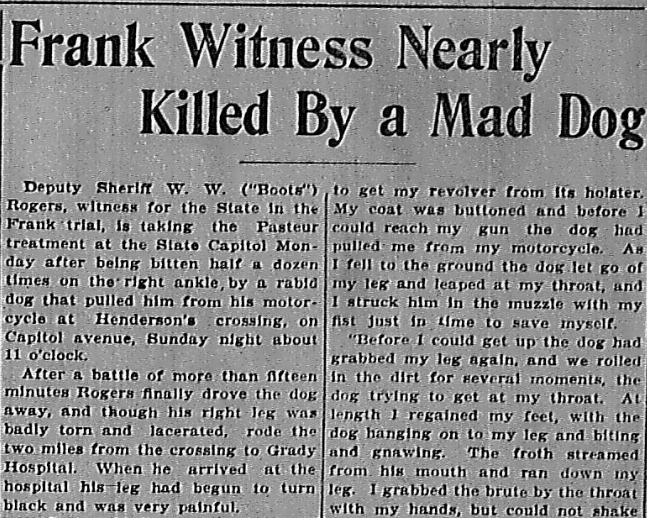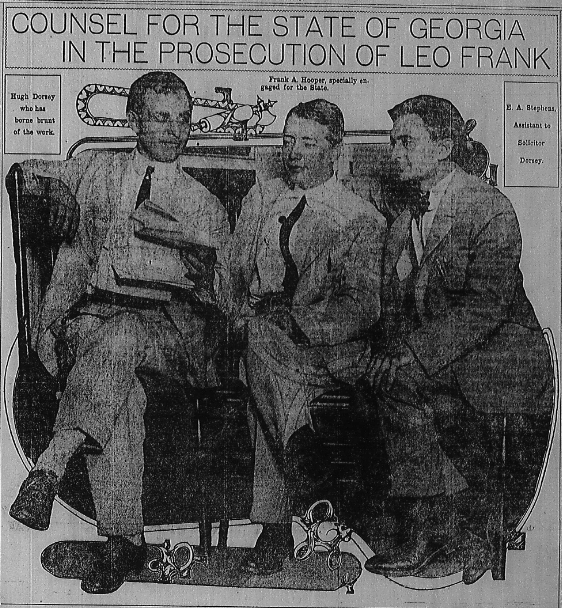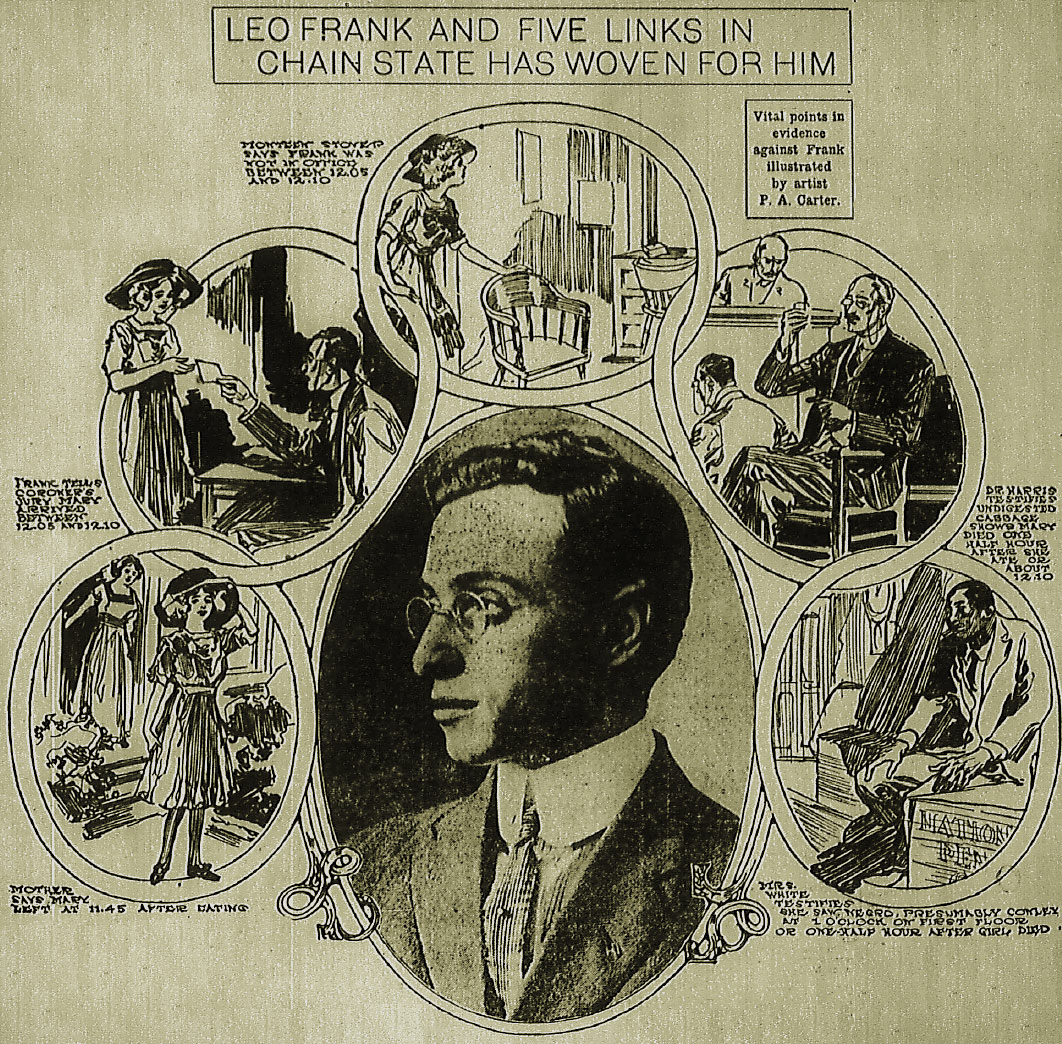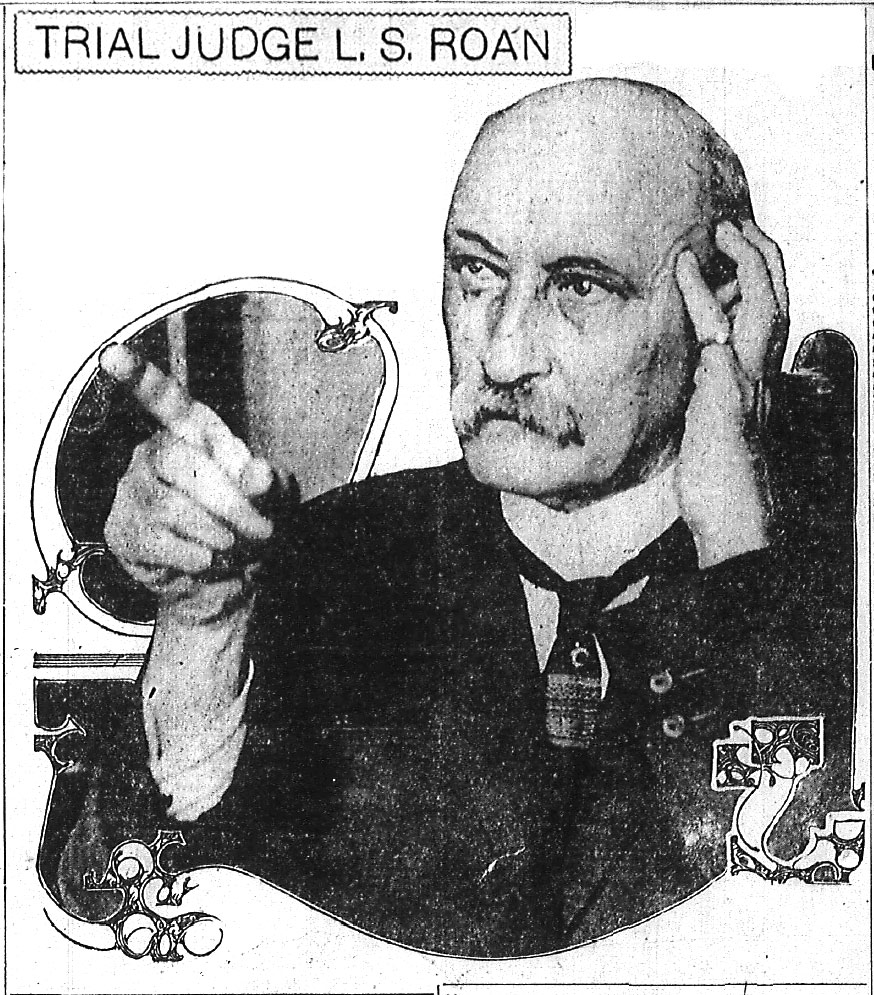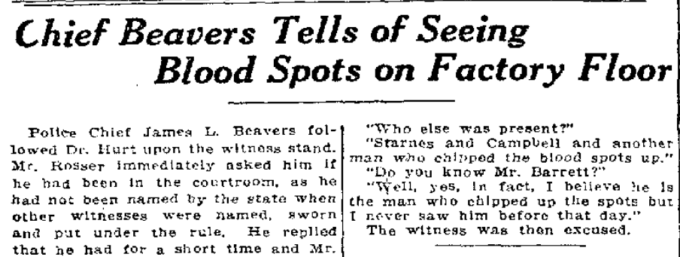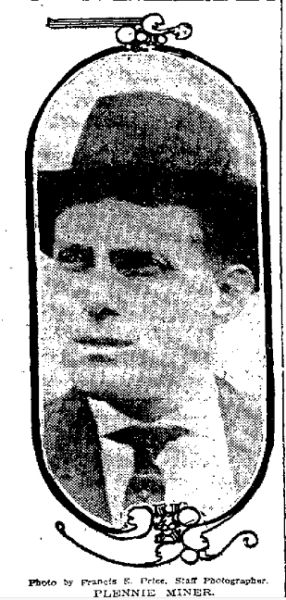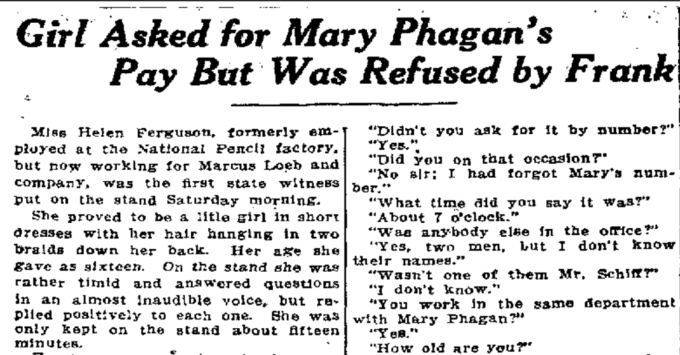Another in our series of new transcriptions of contemporary articles on the Leo Frank case.
Atlanta Journal
August 4th, 1913
Jim thought he was on trial this morning,” said W. M. Smith, attorney for James Conley, the negro sweeper at the pencil factory, after the recess Monday noon following Conley’s appearance on the witness stand of the Frank trial.
Attorney Smith declared that the negro had no idea of his real status in the matter until after the court had recessed.
“Then Conley turned to me, after the jury had gone out and he had been taken off the stand and said: ‘Boss, I wonder what that jury is going to do with me?’ I said: ‘You’re not on trial, Jim. You’re here just as a witness, to tell all you know.’ He said: ‘Oh, ain’t I on trial?’ and appeared to be relieved greatly.”
Conley was taken to the police station and got his dinner there. At 2 o’clock Chief Beavers and Chief Lanford conducted the negro back to the court house and he resumed his place in the witness chair.
The police assert that until a few days ago Conley believed he was going to be hanged for the part which he swears he played in disposing of the dead body of Mary Phagan. Harry Scott, of the Pinkerton agency, is authority for that, too.
* * *

